How to Downgrade iOS 14 Beta on iPhone Back to iOS 13
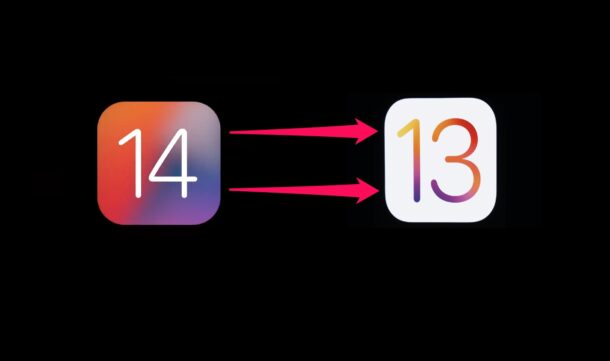
Want to downgrade from iOS 14 beta on iPhone and revert back to iOS 13? Are you facing any major issues after updating your iPhone to iOS 14? Or perhaps you’re not enjoying iOS 14 as you thought you would? Luckily, you can downgrade the iPhone software back to iOS 13 without losing all your data, provided you have a backup available.
Both the developer and public beta builds of iOS 14 are under active development and still have a ways to go before the final version is rolled out later this year. Often, these beta versions can have bugs and other issues that may cause the system and installed apps to not function properly. If you’ve been unfortunate enough to come across several bugs on your device that makes it unusable for daily use, you can manually roll back the update with a little effort. So if you’re looking to go back to a stable version after trying out iOS 14 beta on your device, then read on.
In this tutorial, we’ll be walking you through the steps to downgrade iOS 14 beta on iPhone back to iOS 13. While this is specific to iPhone, you can follow similar instructions for downgrading iPadOS 14 beta on iPad if needed too.
Wait! Before You Downgrade
You’ll need access to a computer running either macOS or Windows with the latest iTunes installed to proceed with the downgrade.
More importantly, you must have an iCloud or iTunes backup of all your data made from when iOS 13 was installed, since that is what you’ll restore data from in case anything fails.
If you don’t have a compatible backup, you will lose all of your data after downgrading. Keep in mind that you cannot restore an iOS 14 beta backup on to an iPhone running iOS 13, thus you’d have to start fresh as if it were a clean install, losing everything that was on the device.
If you are not comfortable with the risk of data loss, it’s best to stay put on iOS 14 and continue to update the beta versions when they are released, eventually leading to the finalized build later in the year.
How to Downgrade iOS 14 Beta on iPhone and Revert to iOS 13.x
This procedure applies to both developer and public beta builds of iOS 14. Assuming you have the backup handy of your iPhone just in case anything goes wrong, let’s get started with the downgrade procedure. Whether you use a Mac or Windows PC, the steps are fairly similar except that you’ll be using Finder on newer macOS versions instead of iTunes.
Always back up your iPhone before attempting a downgrade or software update. If you have an existing backup from iOS 13.x that you want to restore from, you’ll want to archive that backup first within iTunes or Finder so that you don’t overwrite it.
- Download the latest signed iOS IPSW firmware file (currently iOS 13.6) matching the iPhone model you have. Make sure the .ipsw file is stored somewhere easily accessible. The IPSW file you download may change if Apple rolls out a newer iOS 13 update.

- Connect your iPhone to the computer using the included USB to Lightning cable and open iTunes on Windows or Mac OS X, or Finder on MacOS Catalina and later. Click on the “iPhone” icon located below the menu bar in iTunes.

- On Windows, clicking on the “iPhone” icon in iTunes will take you to the summary page. Here, hold the SHIFT button and click the “Update” button.

- On Mac, click on your iPhone under “Locations” on the left pane to access the summary page. Hold the OPTION button and click the “Update” button.

- Now, just find and open the .ipsw file that you downloaded to the computer.

- You will get a pop-up message for confirmation. Click on “Update” to confirm and begin the downgrade process.

This will take several minutes, but do not interrupt the downgrade process at any cost as it may result in data loss, a failed downgrade, or even a bricked device.
Assuming the downgrade was successful, you’ll be back on iOS 13.x on the iPhone again.
If the iOS 14 downgrade fails or is interrupted, your iPhone will be unusable until it’s restored again, likely requiring the usage of Recovery Mode or DFU mode. These methods will erase all the data on your device and you’ll have to restore from a previous iOS 13 backup to retrieve it.
How to Downgrade iOS 14 Beta with Recovery Mode
Although we recommend you use the above method, downgrading with recovery mode will certainly come in handy if the update method via iTunes is interrupted, fails, or your device is unusable. Make sure you have a backup of all the data from when iOS 13 was installed on your iPhone. If not, you will lose all your data, as you cannot restore iOS 14 beta backups to iOS 13.
- Make sure your iPhone is connected to the computer using the included cable and iTunes/Finder is open depending on your operating system.
- Put the iPhone into recovery mode. The steps to enter recovery mode varies depending on the iPhone model you own:
- iPhone 11 Pro, iPhone 11 Pro Max, iPhone 11, iPhone SE (2020), iPhone XS, iPhone XS Max, iPhone XR, iPhone X, iPhone 8, iPhone 8 Plus: Press and release the Volume Up button, then press and release the Volume Down button, then press and hold the Power / Side button until you see the recovery mode screen
- iPhone 7, iPhone 7 Plus, iPhone 6S. iPhone 6S Plus, iPhone SE: Press and hold the Power / Side button and Volume Down buttons at the same time, hold the buttons until you see the recovery mode screen
- When iTunes or Finder detects an iPhone in recovery mode, you’ll get a pop-up. Click on “Restore” to wipe the data and install the current stable version of iOS.
This process will take several minutes to complete and your iPhone will reboot multiple times, so be patient.
Once the process is complete, the iPhone will boot back up into the welcome screen as if it were a brand new device or one that had been reset to default settings.
Now, you can restore the downgraded iPhone from an iCloud or iTunes backup to get back all the lost data.
If that process fails, the next downgrade method is possible with DFU mode, which will also result in erasing the device and data loss unless you have a compatible backup available.
How to Downgrade iOS 14 Beta with DFU Mode
If either of the above methods fail in your instance, which is fairly unlikely, you can resort to DFU mode for restoring your iPhone to iOS 13. Just like the recovery mode method, you will lose all your data once you’re done with this procedure, so make sure you have a backup of your iPhone from when iOS 13 was installed. Once again, you will not be able to restore iOS 14 beta backups to iOS 13.
DFU (Device Firmware Update) mode is basically a deeper version of Recovery mode and it’s only necessary when the iPhone is basically bricked, meaning it’s totally unusable and stuck on a black screen or something similar. It is similar in the sense that you will still be relying on iTunes or Mac to complete the procedure.
The instructions for getting into DFU mode varies depending on your iPhone model:
- Enter DFU mode on iPhone 11, iPhone 11 Pro, iPhone 11 Pro Max, iPhone XS, iPhone XR, iPhone XS Max, iPhone X
- Enter DFU mode on iPhone SE (2020 Model)
- Enter DFU mode on iPhone 8, iPhone 8 Plus
- Enter DFU mode on iPhone 7, iPhone 7 Plus
- Enter DFU mode on iPhone 6s, iPhone 6s Plus, iPhone SE
Once you’ve entered DFU mode on your iPhone, you can restore the device with iTunes and downgrade it in an identical way to Recovery Mode that we discussed above.
Although we were focusing solely on the iPhones in this article, you can downgrade iPadOS 14 Beta on your iPad back to iPadOS 13.x in a similar way too, since iPadOS is basically just iOS relabeled for the iPad and with some iPad specific features.
With all that being said, even after you downgrade you can still re-install iOS 14 developer beta or iOS 14 public beta if you want to give it another try. The beta releases will become more refined and stable as we get closer to the final release sometime in the fall. Otherwise you can simply wait until iOS 14 is released as a final build.
We hope you were able to downgrade your iPhone with iOS 14 back to iOS 13 without incident. Which downgrade method worked for you? Did you manage to retrieve all your data from a previous backup? Did you find another approach for downgrading? Share any insight, tips, thoughts, troubleshooting, or experiences in the comments.

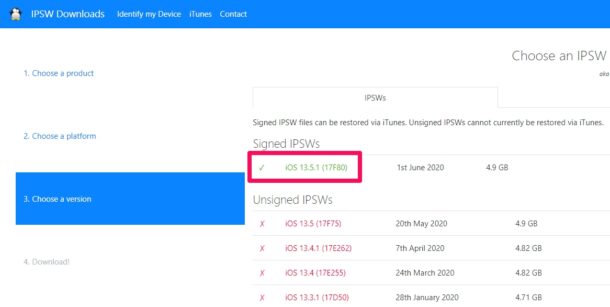
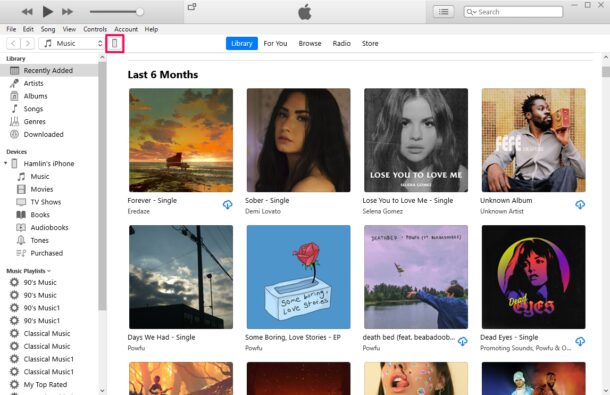
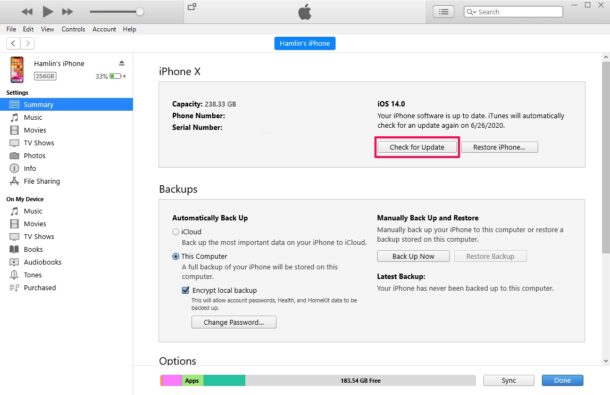
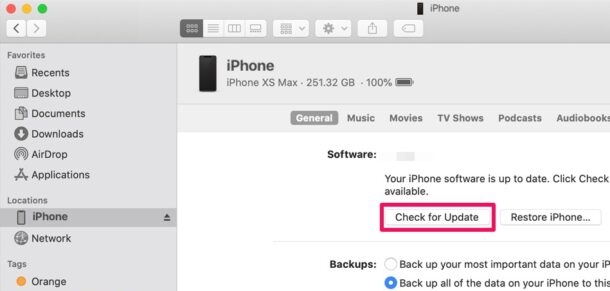
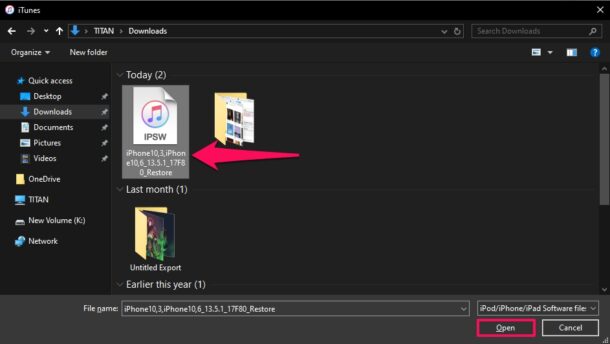
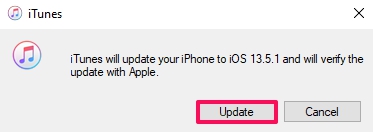

Works just fine but those that do not want it can loose it.